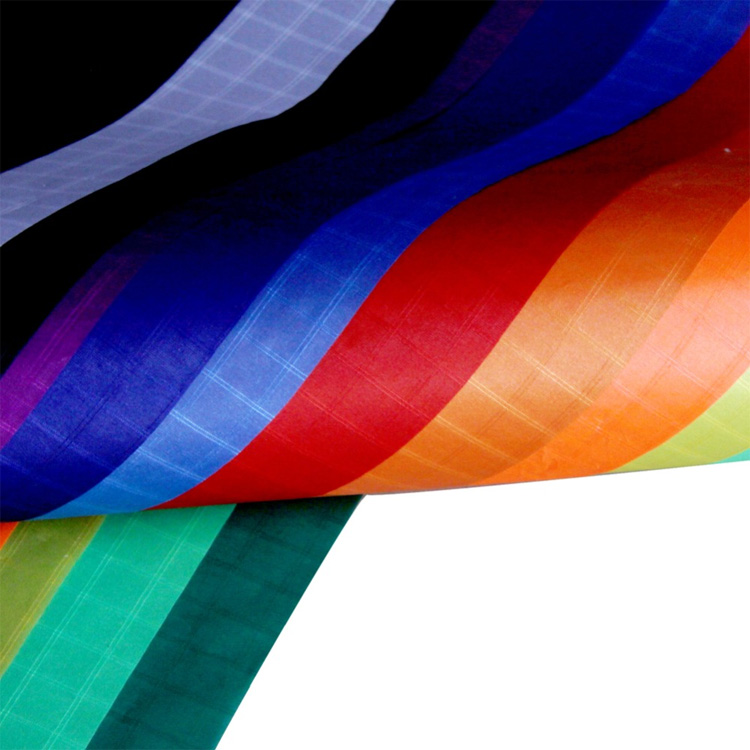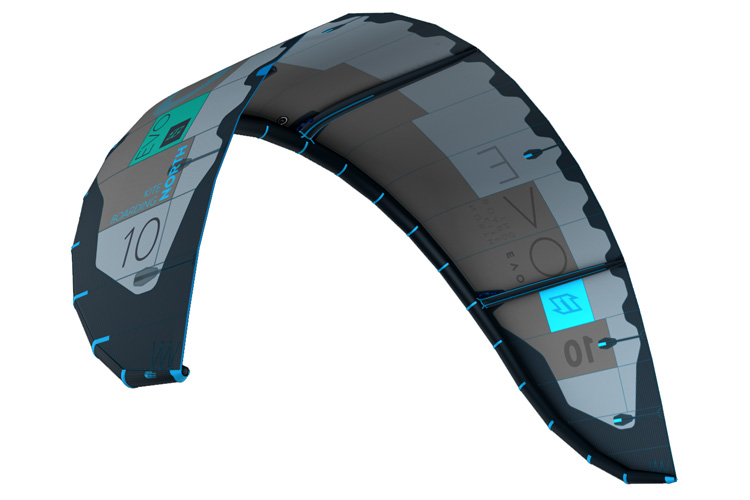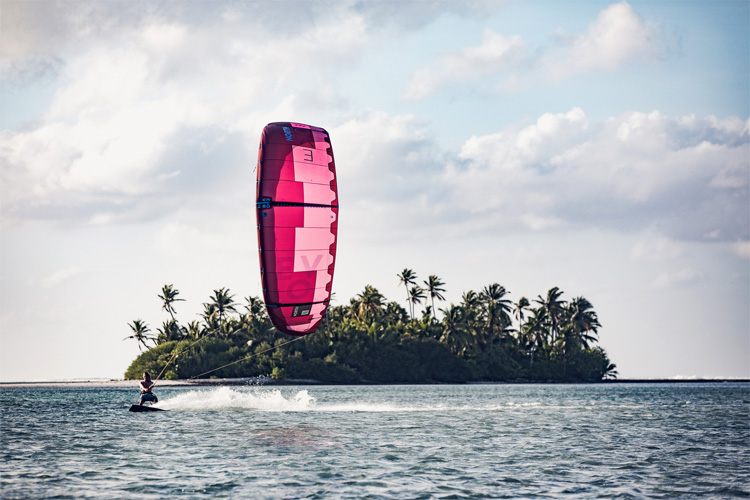Whether you think of a kite as a wing or a sail, you want it to be lightweight, resistant, and waterproof but also stiff and flexible to respond to all flight requests.
Kites evolved tremendously since the turn of the millennium.
Not only they became safer to ride and lighter to carry, and control in and out of the water, but their core materials also became more efficient.
Depending on the type of kite you're riding, different materials and construction methods can be adopted to get a high-performance model.
Kites aren't made of a single piece of fabric.
They're a smart puzzle that combines several secondary structures, panels, and fabrics interconnected by advanced seaming and stitching techniques.
Contrary to popular belief, the main material used in the kite's canopy is not ripstop nylon.
The majority of modern kitesurfing kites are made of polyester because it has a superior UV resistance.

Polyester Features
The only downside is that polyester kites can be more easily ripped and torn compared to ripstop nylon kites.
That's one of the reasons why it is so important to know how to pack up a kite. You have to make sure you're not tearing it.
Polyester is a synthetic polymer made of purified terephthalic acid (PTA) or its dimethyl ester dimethyl terephthalate (DMT) and monoethylene glycol (MEG).
It has a wide range of uses. It can be found in bottles, filters, kayaks, insulation tapes, and even musical instruments.
From a kiting perspective, it's a great material because it has fantastic memory characteristics, it is not expensive, and it ticks all the boxes for a sturdy watersports sail/wing.
But kites need to be able to resist a lot of challenges.
They will fall into the water and drop from the sky, as fast as a bullet, into the beach, parking lots, rocks, or grass.
That's why, more recently, kite companies have been blending the polyester core with other materials.

Imported from Asia
Cuben fiber (CTF3), mylar, dacron DP175, high-tenacity dacron, polyurethane (TPU), ballistic kevlar, and even neoprene are added to reinforce and improve the overall structure.
Recycled materials are still rarely used, but sooner or later, they'll start being put to the crash test.
The problem with less conventional fabrics is that there's just too much pressure for kites to perform.
Not only do they have to be light, strong, and water-repellent, but they also need to be rigid, UV-resistant, permeable, durable, elastic, and airtight, offering the rider a stable and comfortable experience.
The world's largest kiteboarding kite manufacturers - Naish, Cabrinha, F-One, Slingshot, Best, Core, North, Ozone, Airush, Flysurfer, RDD, and Switch - import the polyester cloth used in kites from Asian countries like China, Japan, Sri Lanka, and Thailand.
In many cases, kites arrive at their clients' warehouses ready to be sold.
They've been cut, sewn, and assembled. In fewer cases, brands opt for sewing and assembling the parts in their private facilities.
Teijin Frontier, a Japanese textile company, is the leading supplier of fabrics to the kiteboarding industry.
Its Techno Force formula could be found in over 90 percent of the world's kites.
Take a look at the different parts of a kite.
